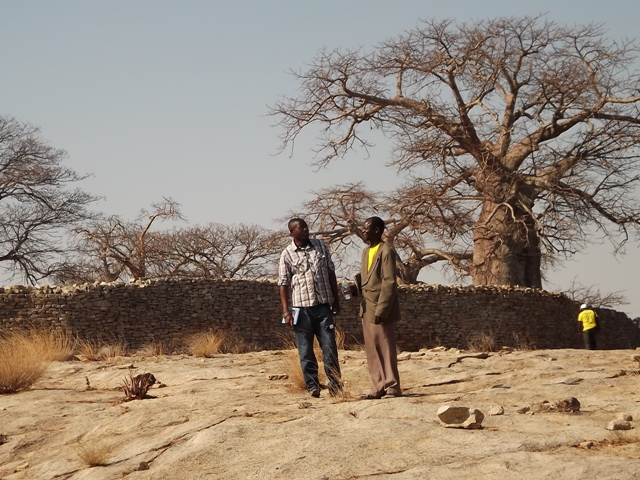


 AFTER many energy sapping, exhausting expeditions that have been the hallmark of my journalism this year, I had decided to rest until 2015. My travels have spanned from the breathtaking but dangerous forests of the majestic Zambezi Escarpment to the wildlife-rich Doddieburn Ranch in West Nicholson. I have provoked packs of lions and courted the ire of suspicious authorities while game viewing in Doddieburn. I have also witnessed the regrettable suffering of Chingwizi villagers in Mwenezi, over 600 kilometres from my newsroom. That was reason enough for resting.
AFTER many energy sapping, exhausting expeditions that have been the hallmark of my journalism this year, I had decided to rest until 2015. My travels have spanned from the breathtaking but dangerous forests of the majestic Zambezi Escarpment to the wildlife-rich Doddieburn Ranch in West Nicholson. I have provoked packs of lions and courted the ire of suspicious authorities while game viewing in Doddieburn. I have also witnessed the regrettable suffering of Chingwizi villagers in Mwenezi, over 600 kilometres from my newsroom. That was reason enough for resting.
But the dynamic Minister of Tourism and Hospitality Industry, Walter Mzembi, effectively recalled me out of semi retirement. His invitation for me to attend World Tourism Day celebrations at Matendera Ruins in Buhera a fortnight ago proved too difficult to turn down. I had never set my foot at any of these Iron Age capitals that have defied age and still proudly stand as reminders of Zimbabwe’s early civil engineering ingenuity. I just had to go!
At 2000hrs on September 25, I joined many civil servants on the trip that opened fresh perspectives in my life. We arrived at Murambinda Growth Point from Harare after three hours to be greeted by both shock and pleasant surprises. Outside Harare’s luxurious hotels and modern malls, night life is still vibrant, I realised. This is in spite of the liquidity crisis, high unemployment and the economic slowdown that has rattled families and turned once stable communities upside-down across this country. At Murambinda, youths and the mature intoxicated themselves with the wise waters.
Boys and scantily dressed girls, as well as men and women, made sexually suggestive dances to the latest Zim dancehall music well into the early hours of the following day. It was a pleasant way to psych ourselves up ahead of Tourism Day, but all the same, it was shocking in the age of deadly sexually transmitted diseases. In a scarcely-lit nightclub, boys and girls danced in rhythmic fashion, moving sideways, backwards and to the front. Males and females caressed each other’s hips, frequently shifting dancing styles from dancehall to jiti. When the track, Vakomana Ndanakirwa, Handiende Kumba…. Kumba Kunouya Kuno, was belted, the revellers livened up.
The song means “I am enjoying and I will not go home. My home must come here”. Before we knew it, it was 0300hrs. The warm hospitality of the patrons of Murambinda was assuring. But one will never exhaust the array of attractions in Manicaland, where Buhera is situated. About 45 kilometres south of Marambinda is the breathtaking Matendera Ruins. The monument proudly sits on the summit of a centuries-old dwala that cuts an imposing figure over largely submissive mountain ranges bordering barren, rolling plains on its fringes.
Matendera is so majestic that once one gets a glimpse of it, they can easily ignore the extensive suffering and hunger evident across the populous communal lands in Chief Nyashanu’s area. In all directions, the expansive plains disappear where the undulating mountain ranges starts. I was privileged to set foot on these remnants of the ruins that were the capital of several ancient towns that sprouted across Manicaland after the fall of Great Zimbabwe at least three centuries ago. In Buhera, these ancient cities included Muchuchu, Kagumbudzi, Chiona and Matendera.
Nobody knows exactly when Matendera was built, who built it, or the kingdom that called the shots from this structure of immense historical significance. That the rulers were ancestors of present day Shona people is no doubt. It resembles the Great Zimbabwe Ruins. A royal dosage of fine wind accompanied me up to the palace where I am convinced was one of the seats of a powerful kingdom. Walking past several ruins of round stone huts that must have been the residence of commoners, something struck my eye: It should have been the queen’s house.
The king would proudly walk down the hill to visit the queen. But he would call any beautiful girl he wanted up to the palace when and as he wished. Was it his respect for the queen? The explanations are many. What is clear is he was powerful. What with the capacity to mobilise thousands of his subjects to blast stones and build age defying walls without mortar? The walls have defied the odds. They remain standing 300 to 400 years later.
An exciting feature of Matendera is a footprint that cut a deep imprint on the surface of the dwala. The imprint has been there for as long as humanity can imagine. Whoever stepped there must have been special. There is a frenzy of speculation about the feet. I thought it should have been the king himself, in one of his final moments as he fled a war or a terrifying natural disaster.
newsdesk@fingaz.co.zw